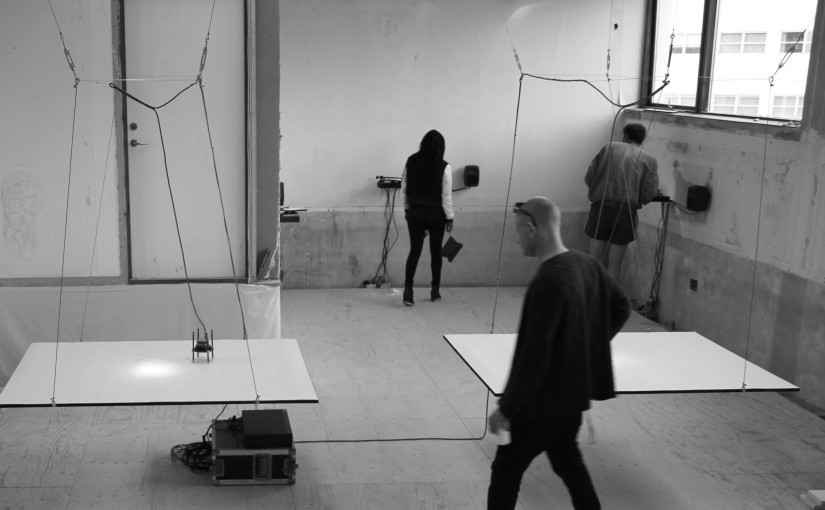Apart from keynote lectures and performances, the conference consists of four workshops:
1 Listening Ontologies
The workshop focuses on sound as perception and how to engage with the world through sound and listening. How can sound be understood as a temporal, spatial and material phenomena. How does sound enact futures and pasts, and how can sound open up for situated and site-specific knowledges? Sound can affect the senses, the body and sound creates environments? How can we withdraw knowledge from urban and landscape environments and is sound recordings to be understood as representation of space, as enactments? Through proposals engaging with the ontologies and epistemologies of sound, the workshop includes both theoretical perspectives and site-specific investigations of the perceptual potential of sound. Listening ontologies will perform alternative modes of perceiving, listening and relating to the world.
The audio productions in this workshop have explicit theoretical, ontological or epistemological references
Participants:
Graham Flett and Nicole De Brabandere: “Hearing on the Verge: Cuing and Aligning with the Movement of the Audible”
Pedro Oliveira: “The Auditory Ghosts of Amager, 2055”
Kaya Barry: “Multi-sited panoramic performance.”
Felix Gerloff and Sebastian Schwesinger: “Transducing the Bosavi Rainforest: Sonic modes of processing culture.”
Amager guide and workshop facilitator: Emilie Munck
*
2 Mediating Sound Walks
Sound walk is a well-known method of exploring soundscapes of specific environments first introduces by R. Murray Schafer. A sound walk can be performed both individually or collectively, it can be recorded or memorised, and it can be conducted through certain listening modes, such as e.g. global and focal listening (in Oliveros’ terms).
This workshop takes its point of departure in sound walks on Amager, and opens towards the overall topic: Considerations concerning the transformation of site-specific and environmental real time experience into produced and acousmatic sound production. Other aspects are also included such as auditory aspects of memory and pasts or extended perceptions of sound walks through advanced technology.
Participants:
Anette Vandsø: “Listening to the World as Object and Non-human Agency”
Jacob Borrits Sabra: “The Performing Dead: Forgotten bodies at Vor Frelser Cemetery and their audio traces through Copenhagen”
Ben Kreimer: “Radio Frequency Ghosts”
Jessica Thompson: “Borderline: Re-Making Place through Augmented Soundscape Generation. A practice-led investigation of Amager-as-site through performative mapping of interstitial sonic territories”
Rasmus Holmboe and Jan Stricker “Sonic Fiction as the Mapping of Difference.”
Amager guide and workshop facilitator: Nicoline Bergman
*
3 Audio Paper Production
The workshop focuses on research and audio narratives relating to the atmosphere of places and performance in various aesthetic fields and genres. The audio papers construct soundscapes on their own by working with various methods and dramaturges. Several papers take a point of departure in other aesthetic and research disciplines including beat poetry, theatre, radio, film, music, political geography and olfaction studies. The audio papers in the workshop addresses cross-sensory modes of performances or investigate the borders between them and what constitute their sonic territories.
Participants:
Jacob Kreuzfeldt and Lori Petersen: “Site / No-site. The materiality of the radio studio.”
Katrine Pram Nielsen and Macon Holt: “Setting Up a Sound Factory on Odesk and Amager.”
Sune Fredskild and Arendse Krabbe: “Listening to Vertical and Horizontal Borders”
Kevin Brown: “Social Activism, Telepresence, and Collaboration in “The Orphan Sea”.”
Justyna Stasiowska: “Ephemeral performance or how does sound smell.”
Anne Robinson: “Through the Air with the Greatest of Ease: An exploration of ‘phonogenie’ and daring”
Ben Byrne: “Place-Time (Sounds): Hearing Manfred Werder’s 2005.”
Amager guide and workshop facilitator: Jon Günther Andersen
*
4 Sound Diffusion
This workshop deals with spatialisation of sound. Taking point of departure in recordings of site-specific sounds, the group, in various ways, investigates how characteristics of a chosen space can be transformed to an installation existing of loud speakers. The group can deal with questions such as: how are spatial characteristics reproduced, how is the temporality of the installation considered, and how are the various sound objects and soundscapes chosen, constructed and designed?
For this workshop we have booked a room at the University of Copenhagen, Amager (KUA). The room will be available Thursday through Sunday (Sunday is only for presentation). In the room the technical staff at KUA has installed 8 speakers and a mixer. Further technical details follows.
Participants:
Jay Kreimer and Sharon Stewart: “Accretion and Effluence: – A sonic imaginary of lorteøen.“
Lorenz Erdmann: “Mapping Amager”
Alexandra Baixinho and Tine Blom “Sonic Encounters: Mountain meets waterfront.”
Amager guide and workshop facilitator: Peter Sejersbø
*
Cross-over Sounds
Crossing borders, performing place, distance, presence and space-time, connecting with distances, creating telematic encounters and presence experiences are key in cross-over sound performance. Some participants and visiting correspondants perform in the intersection between fluid sounds Amager, Fluid States North and various PSi Fluid States global platforms. Performances differ in format, but all uses sound as away of making present. Intimacy is gained across distances, research methods and artistic practices; Sound connects gigantic scales, connects to solid food, to a sensous society in Greenland or to multi-sites from the North Atlantic to Australia.
Cross-over performances consist of site-specific performances on chosen locations on Amager and various media platforms across the ocean. Some works will broadcasted to audiences across oceans and borders. Some will remain local experiences and reflections.
Hans Sydow: “Sound Art at Musiktorvet” (connects to the local cultural community at Amager)
Kaya Barry: “Multi-sited Panoramic Performance” (connects to Fluid States North and Fluid States Australia)
Shannon Werle: “Bread Tone” (connects to Fluid States – Solid Food)
Kevin Brown: Social Activism, Telepresence, and Collaboration in “The Orphan Sea” (connects to actors and participants in The North Atlantic)
Annette Arlander: “Porous Studio, Amager” (Connects to Fluid States North)
Anne Robinson: “Phonogenie: Sound Magic” (Connects to Fluid States North)
Sound researcher Stina Hasse is the on-site curator collecting sound souvenirs and local site-specific performances to the Fluid States North events in Greenland and the Faroe Islands and beyond.


